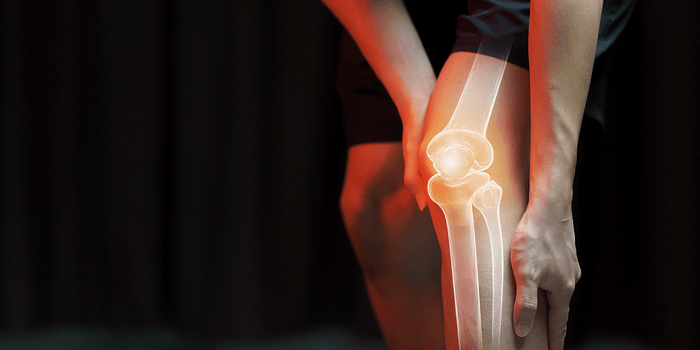Ultrasound-Guided Cortisone Injections for Patellar Tendonitis
Introduction
Patellar tendonitis, commonly known as “jumper’s knee,” is a condition characterised by inflammation of the patellar tendon, which connects the kneecap (patella) to the shinbone (tibia). This condition is common in athletes involved in jumping sports but can also affect individuals engaged in repetitive strain activities or those with biomechanical imbalances. Patellar tendonitis can cause significant discomfort and impact mobility, making effective management essential. At Alton Pain Clinic, we specialise in advanced treatments such as ultrasound-guided cortisone injections to address the symptoms of patellar tendonitis and support patients in their recovery journey.

Anatomy of the Patellar Tendon
Structure
The patellar tendon is a thick, fibrous band of connective tissue that plays a vital role in knee joint function.
- Location: It extends from the inferior pole of the patella to the tibial tuberosity.
- Composition: Comprised mainly of collagen fibres, it is designed to withstand high tensile forces.
- Function: It transmits the force generated by the quadriceps muscles to the tibia, enabling knee extension and activities like jumping, running, and climbing.
Surrounding Structures
- Quadriceps Tendon: Connects the quadriceps muscles to the patella.
- Patella: Acts as a fulcrum, improving the leverage of the quadriceps tendon.
- Bursa: Small sacs of fluid around the tendon reduce friction between the tendon and adjacent tissues.
Pathology of Patellar Tendonitis
Definition
Patellar tendonitis is an overuse injury caused by repetitive stress on the patellar tendon, resulting in microtears and inflammation.
Causes
- Repetitive Stress: Frequent jumping or running can overload the tendon.
- Sudden Increase in Activity: Abrupt changes in exercise intensity or volume can contribute to tendon strain.
- Biomechanical Factors: Poor alignment, weak quadriceps, or tight hamstrings may increase tendon stress.
- Inappropriate Footwear: Wearing shoes that do not provide adequate support can exacerbate strain.
Symptoms
- Pain at the lower pole of the patella, especially during activity.
- Stiffness or discomfort in the tendon during movement.
- Swelling or thickening of the tendon in some cases.
- Pain that worsens with activities like jumping, climbing stairs, or squatting.
Diagnosis of Patellar Tendonitis
Comprehensive Assessment
At Alton Pain Clinic, we utilise a systematic approach to diagnosing patellar tendonitis:
- Medical History: Gathering details about symptoms, activity levels, and prior injuries.
- Physical Examination: Checking for tenderness at the patellar tendon and evaluating knee function.
- Imaging Studies: Ultrasound or MRI is used to confirm the diagnosis, revealing thickening of the tendon or signs of inflammation.
Management of Patellar Tendonitis
Treatment of patellar tendonitis typically involves a combination of conservative and advanced therapeutic options.
Conservative Management
- Activity Modification: Reducing activities that exacerbate pain to allow the tendon to heal.
- Physical Therapy:
- Stretching Exercises: To improve flexibility in the quadriceps and hamstrings.
- Strengthening Exercises: To build resilience in the quadriceps and surrounding muscles.
Advanced Treatments
For persistent or severe cases, further intervention may be necessary:
- Ultrasound-Guided Cortisone Injections: A targeted approach to reduce inflammation and pain.
Ultrasound-Guided Cortisone Injections at Alton Pain Clinic
Precision Treatment
Cortisone injections are a minimally invasive treatment that delivers anti-inflammatory medication directly to the affected area. Ultrasound guidance ensures precise delivery, improving outcomes while minimising risks.
Benefits of Ultrasound Guidance
- Enhanced Accuracy: Direct visualisation of the patellar tendon ensures precise placement of the injection.
- Improved Safety: Surrounding structures such as blood vessels and nerves are avoided.
- Optimised Outcomes: Accurate delivery of cortisone maximises its therapeutic effects.
Mechanism of Action of Cortisone
Cortisone, a corticosteroid, works by modulating the body’s inflammatory response.
- Reduction of Inflammatory Mediators: Cortisone inhibits the production of substances like prostaglandins and cytokines that drive inflammation.
- Stabilisation of Cell Membranes: It prevents the release of enzymes that can damage tissues during inflammation.
- Pain Relief: By addressing the underlying inflammation, cortisone helps to reduce pain and improve function.
Why Choose Alton Pain Clinic?
At Alton Pain Clinic, we are committed to delivering patient-centred care tailored to individual needs. Here’s why patients trust us for managing patellar tendonitis:
- Expert Clinicians: Our team specialises in advanced diagnostic and therapeutic techniques, including ultrasound-guided injections.
- State-of-the-Art Facilities: We use cutting-edge technology to ensure precise and effective treatment.
- Holistic Care: Beyond managing symptoms, we focus on supporting overall recovery and well-being.
Preventive Strategies for Patellar Tendonitis
- Progressive Training: Gradually increasing activity intensity and volume to prevent overload.
- Proper Warm-Up: Engaging in dynamic stretching before exercise.
- Footwear Selection: Using well-cushioned and supportive shoes to reduce impact stress.
- Strengthening Programmes: Targeted exercises for the quadriceps and hamstrings to enhance tendon resilience.
Conclusion
Patellar tendonitis is a common condition that can significantly impact mobility and quality of life. However, with accurate diagnosis and tailored treatment, effective symptom management is achievable. At Alton Pain Clinic, our expertise in ultrasound-guided cortisone injections ensures precise and targeted care, helping patients on their path to recovery.
For more information or to book a consultation, contact Alton Pain Clinic today. Let us help you take the next step towards pain relief and improved function.

Comments
Post a Comment